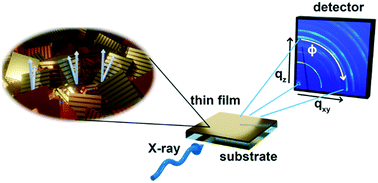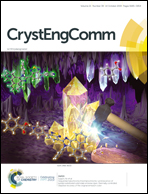Quantifying multiple crystallite orientations and crystal heterogeneities in complex thin film materials†
Abstract
Thin film materials have become increasingly complex in morphological and structural design. When characterizing the structure of these films, a crucial field of study is the role that crystallite orientation plays in giving rise to unique electronic properties. It is therefore important to have a comparative tool for understanding differences in crystallite orientation within a thin film, and also the ability to compare the structural orientation between different thin films. Herein, we designed a new method dubbed the mosaicity factor (MF) to quantify crystallite orientation in thin films using grazing incidence wide-angle X-ray scattering (GIWAXS) patterns. This method for quantifying the orientation of thin films overcomes many limitations inherent in previous approaches such as noise sensitivity, the ability to compare orientation distributions along different axes, and the ability to quantify multiple crystallite orientations observed within the same Miller index. Following the presentation of MF, we proceed to discussing case studies to show the efficacy and range of application available for the use of MF. These studies show how using the MF approach yields quantitative orientation information for various materials assembled on a substrate.

- This article is part of the themed collection: 2022 Journal of Materials Chemistry Lectureship runners-up: Jessica Wade and Luisa Whittaker-Brooks


 Please wait while we load your content...
Please wait while we load your content...